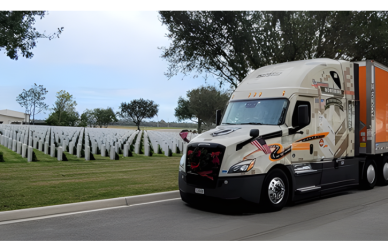The spotlight will shine on challenging technical issues and industry innovation from March 4-7 in New Orleans, as TMC Executive Director Robert Braswell announced the upcoming 2024 Technology & Maintenance Council Annual Meeting and Exhibition. This eagerly anticipated event, hosted by the division of the American Trucking Associations, is set to take place at the Ernest N. Morial Convention Center and is expected to attract over 5,000 attendees.
Braswell underscored the industry’s imperative need to unite not only in determining the optimal units for electric trucks as they become more prevalent but also in standardizing nationwide infrastructure to meet the increasing demand for power.
“How do you spec these different charging stations, what will be required in terms of the wiring and the structure and the buildout of those stations, and how long it will take for that infrastructure to come online?” he said. “In some areas, like Southern California, you have a better chance of getting it done, compared to, let’s say, the middle of Iowa.”
On a global scale, there are two competing charging systems – the CHAdeMO system developed by Japanese engineers and the CharIN portal by Europeans. Braswell urged trucking companies to proactively build relationships with electric service providers during the transition to electric vehicles (EVs), battery-electric, or hybrid vehicles.
“There are many questions that fleets have, particularly when it comes to the time frame to develop the infrastructure,” he said, “and how do you deal with the fact there are more than 3,500 electric service providers in the U.S., and it’s important to know how to interface with each of these separate entities when you are trying to establish an electric vehicle fleet.”
The push towards alternative fuels aligns with original equipment manufacturers (OEMs) designing and producing trucks with historic high miles-per-gallon (mpg) fuel-economy ratings, operating with the lowest emissions.
“Our technical session on the latest findings on the Department of Energy’s SuperTruck II and III programs is so important,” Braswell said. “We are very keen to see what type of adaptations we can make in fleets based on the findings that they achieved. “All of the different companies — Cummins, Daimler, Navistar, Paccar, Volvo — have all created super trucks that can achieve 16 miles per gallon and fuel economy, which is outstanding. We want to transfer this technology to the existing fleets as a bridge to future powertrain designs. This is fantastic, and TMC is very interested in that.”
Since 2009, the Department of Energy (DOE) and OEMs have collaborated to create a zero-emission, heavy-duty truck capable of regional and long-haul freight deliveries, achieving a remarkable 160% improvement in fuel efficiency to 16 mpg.
Braswell emphasized that the industry is currently navigating a transitional period concerning different energy sources, and TMC is committed to maintaining a leading role in steering this evolution.
“There will not be one particular solution that best suits every application in a commercial vehicle. Certainly, battery-electric will play a role in key areas, like last-mile and regional. Hydrogen may be better for the long haul,” he said. “If we get some of the infrastructure challenges in place, maybe CNG will continue to have a role to play, as well as liquid natural gas, in addition to conventional diesel and renewable diesel, which is a green fuel. TMC will be at the forefront trying to develop best practices for fleets to manage their assets.”
Addressing the rising concern of cybersecurity threats directed at the trucking industry, Braswell highlighted that TMC is actively focusing on developing strategies to tackle these challenges, both in the back office and onboard vehicle technology.
Despite challenges, including a persistent technician shortage and evolving training options for heavy equipment, TMC officials express optimism about the industry’s future. They believe that the ongoing improvements in addressing the shortage are positive indicators, recognizing the need for effective training options in the heavy equipment sector.
Source: Transport Topics











